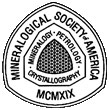 |
The Mineral Identification Key |  |
 |
The Mineral Identification Key |  |
In Conclusion
As hinted at in the sections above, the collector needs to be careful about depending too much on any one or two properties or tests. While a mineral’s color, or hardness, or streak, etc., may suggest a likely culprit, a systematic approach – followed methodically – is much more likely to bring you to an accurate conclusion. Many collectors are well aware of the unreliability of "sight identifications" – deciding what a mineral is just by looking at it. Yes, many common minerals can be identified that way with experience – but many more can’t, and every now and then something so identified turns out to actually be something else. Even chemical and crystallographic tests have been known to fail to identify a mineral correctly. So it isn’t surprising that simpler techniques need to be used carefully in order to get the best results; and sometimes, they too fail.
Finally, while this Key should help the collector correctly identify many minerals, it won’t work all the time. Common minerals are found in uncommon forms. Some are closely mimicked by less-common or rare species. And, there is always the chance that a collector will find something that isn’t even covered by this Key. If you find yourself correctly identifying 60% of the minerals you find, you will be doing well. And the odds are that the other 40% are species not readily identified with this key – worked on in the home lab with other techniques, maybe even sent in to a professional lab in order to obtain a positive identification.
The trick is to do your best at each stage of the discovery process.
Organization & Redundancy
Beyond the obvious organization of the mineral listings into sections and sub-sections, there is a rough order of presentation which may help make it easier for the user to key things out.
The main order of presentation is by key features of the minerals – luster, streak, cleavage, and so on. When the key leads you to a particular sub-section based on a key feature you then have to carefully try and match your sample to one or more of the descriptions listed in that subsection. Since some of the subsections have quite a few minerals listed, an attempt has been made to organize them into groupings based on further refinements of the features. For example, if you have a non-metallic mineral with a colored streak and end up at Table IIA you will see that the minerals are grouped according to color of streak – all the pinks to reds together, all the oranges and yellows next, and so on. Then within a particular group they are listed roughly in order of increasing hardness – softer ones first, hardest last. So you should be able to quickly eliminate anything that doesn't have the color streak of your sample and concentrate on those that do, and if you know the hardness you may be able to focus your search even further, paying closest attention to those species with the same hardness as your sample.
Another example is the way Table IIB-1 is subdivided: all those that have cleavage in only one direction are first, then those with two cleavages, then those with three. Note that the background color in the table changes with each change in the number of cleavages. Within each group they are again listed in subgroups by color and hardness. So if you have a sample with cleavage in two directions you can quickly skip down to the listings for those and then home in by color and hardness. In places, the subdivisions go even further – like all the Amphibole Group species of similar hardness being listed together.
Hopefully this organization – which is admittedly not perfect – will help you to refine your search and focus on the most likely minerals that match the sample in your hand.
A number of minerals are listed in more than one place. For example, hematite is listed three times. This is because it has such varied habit and differences in its properties from habit-to-habit that one might key one sample out to one place, but then key out a sample with a different habit and properties to another place. Also, some species sort of fall on the dividing line between sections of the listings. Such minerals might key out to either section, so they are listed in both. And some species may or may not exhibit prominent cleavage, keying out to different spots depending upon which is the case for the sample you have in your hand. Etc…
Where there is more than one mineral in the name field, this signifies that there is a solution series with more than one end member or that the compound can exist in two different crystal classes. These series are created when one element can substitute for another at a particular place in the crystal. To fully characterize these minerals, a chemical analysis is usually required (which is beyond the scope of this key).
Hopefully this feature of the key will enhance the odds of keying out any given sample – no matter what it's particular properties may be.
[ Table of Contents ] [ Introduction ] [ Identification Kit ] [ Mineral Properties ] [ Environments & Associations ] [ In Conclusion ] [ The Mineral ID Key ]